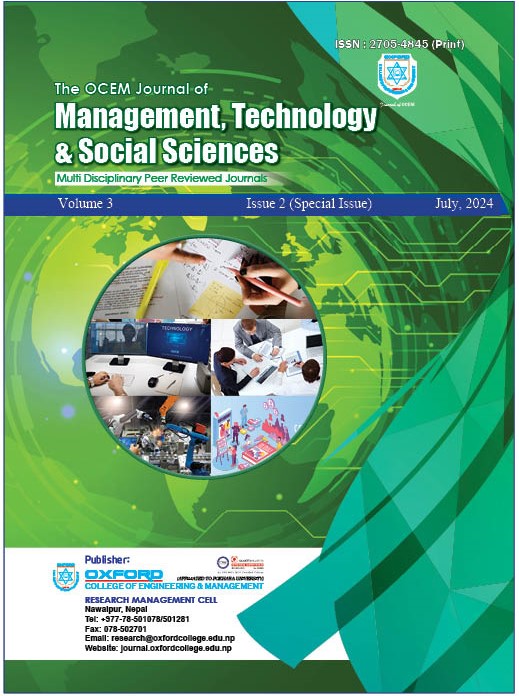Innovative Financial Inclusion Models: Lessons from Tulsipur Sub-Metropolitan City
DOI:
https://doi.org/10.3126/ocemjmtss.v3i2.67878Keywords:
financial inclusion, financial literacy, government regulation, financial services, Tulsipur Sub Metropolitan CityAbstract
Financial inclusion ensures everyone can easily access affordable financial services, promoting social and economic inclusion. The study’s objective was to investigate how financial literacy, financial services, and government regulation influence financial inclusion in Tulsipur Sub Metropolitan City of Dang district, Nepal, employing a convenience sampling method to select one hundred and twenty-five respondents. A quantitative research approach along with the survey study was applied to understand the opinions, ideas and experiences of targeted respondents of financial institutions. Through structured questionnaires, data were collected to assess the extent of financial inclusion among individuals in the region, applying statistical tools like mean, chi-square, and logistic regression for analysis. Findings indicate a predominant level of financial inclusion among respondents, Demographic factors like age, academic qualification, occupation, and monthly income display differences. Government regulation, financial literacy, and the accessibility of financial services from banks emerged as the influential determinants of financial inclusion, emphasizing their crucial role in shaping access to financial services.
The findings indicate significant relationships between financial inclusion and various factors. Firstly, financial literacy, secondly, accessibility and affordability of financial services suggesting that convenient and affordable services increase financial inclusion by a factor of and thirdly, the regulatory environment, particularly banking regulation by the government, significantly impacts financial inclusion, which were found strong predictors of financial inclusion. This research contributes to a deeper understanding of the factors contributing to financial inclusion and underscores the importance of targeted interventions aimed at improving access to financial services, thereby fostering economic empowerment and social inclusion.
Downloads
Downloads
Published
How to Cite
Issue
Section
License
This license enables reusers to distribute, remix, adapt, and build upon the material in any medium or format for noncommercial purposes only, and only so long as attribution is given to the creator.




